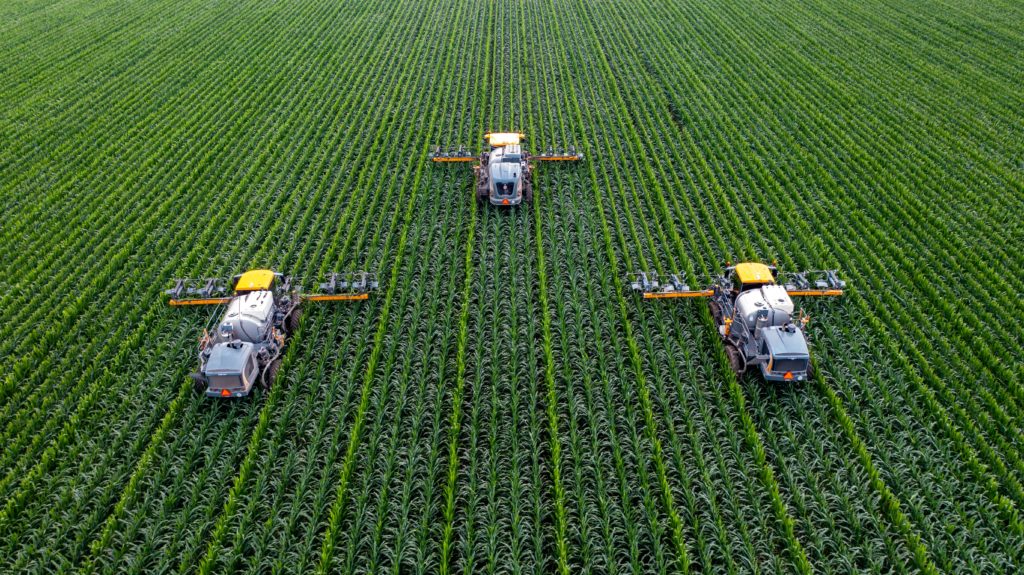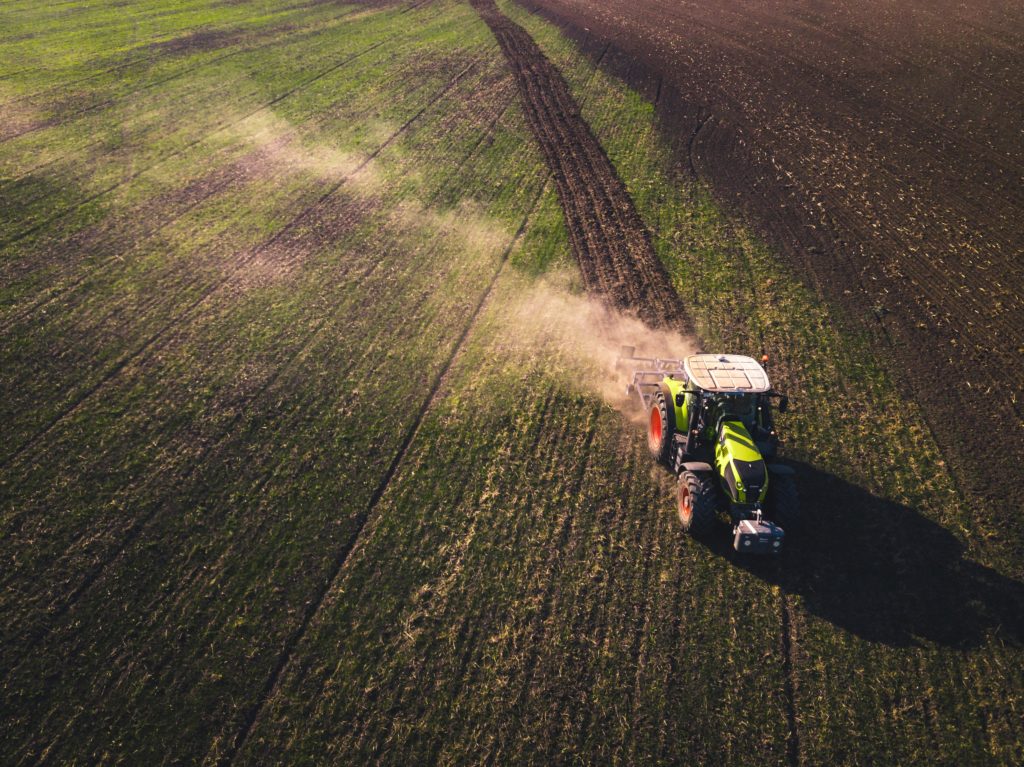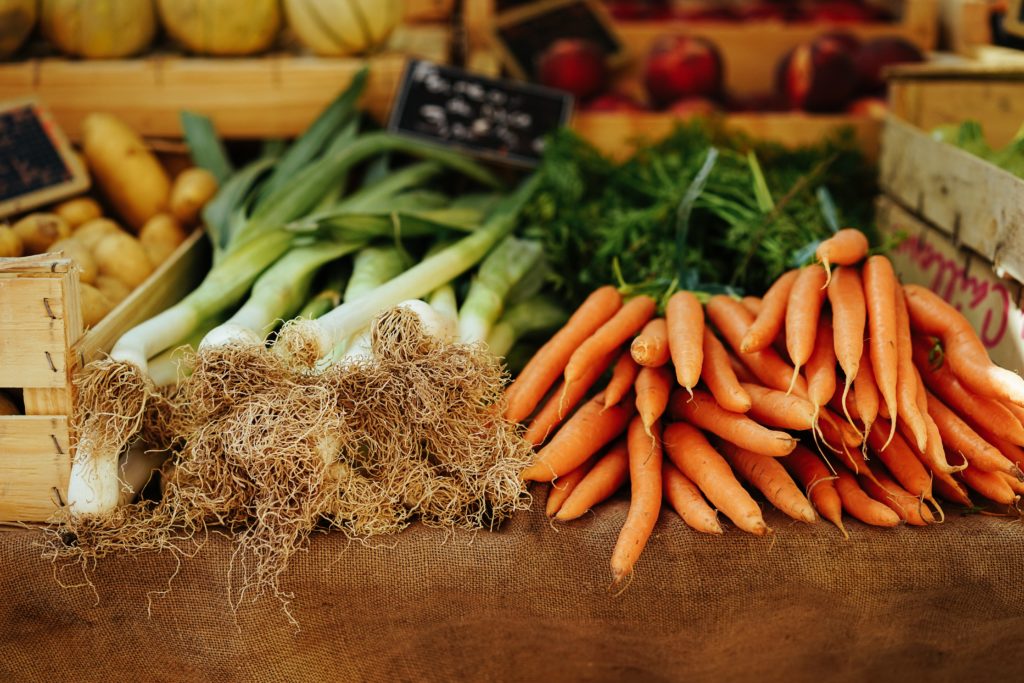(Pour la version française, veuillez cliquer ici.)
The Dangers of Intensive Agriculture
Intensive agriculture is the primary food production method in most developed nations. This, and the change of land use it requires, produces about a quarter of all our Greenhouse Gas emissions. If we are to keep Global Warming to less than 1.5 degrees Centigrade then we must reduce the emissions that we create with our food production.

As well as the carbon emissions that we generate, the food system affects the health of our planet in many different ways, most of them bad:
- Agriculture productivity itself is affected by global warming.
- We are clearing forests to grow food and thus reducing the trees available to take carbon out of the atmosphere. At the same time we are creating bare soil which allows more carbon to escape into the atmosphere and encourages erosion.
- We are drastically reducing the productivity of our soil.
- We are polluting our rivers and lakes with run-off from artificial fertilizers.
- We are destroying biodiversity at an incredible rate.
- We are reducing the diversity of our food crops enormously. This could be a huge threat to our food security if the crops remaining cannot thrive for whatever reason.
- We are very cruel to millions of animals.
- We are threatening our own health with the production of food that is now nutritionally deficient and often toxic with the use of chemicals.
- Small farmers are struggling worldwide with reduced productivity and poverty.

The Soil
I have read, and probably you have too, that our soils are now so depleted that they are capable of producing perhaps only 60 more harvests. This is unlikely to be true, although it is certainly alarming. On a global level there are so many different types of soil and so many different situations that it is just not possible for scientists to know. However that is not to say that our soils are in a good state. We certainly need to urgently attend to their health and productivity. Right now we are losing huge amounts of useful soil through erosion, desertification, pollution, acidification, loss of organic carbon in the soil and salinization.
Soil also has the potential to be a huge carbon sink. It can absorb carbon from the atmosphere and thus reduce its potential to warm the climate. So improving our farming methods will produce many positive results.
What can we do globally to improve our soils?
Worldwide we use a number of methods of farming to produce the food we need to feed the present population of 7.9 billion people. (This is estimated to increase to almost 10 billion by 2050.) Some are much more detrimental to the health of the planet and our own health than others.
Intensive Agriculture
While about 80% of our food globally is produced by small and often poor farmers, much of the food in the developed world is produced by a high-yield producing type of farming that requires a lot of artificial inputs and heavy farm machinery. The downside of this approach is that it pollutes the land and seriously affects the health of the people it is designed to feed, and threatens the livelihood of poorer farmers. See this article on intensive farming: https://eos.com/blog/industrial-agriculture/

Sustainable Intensification
Sustainable intensification is defined as a process or system where yields are increased without adverse environmental impact and without the cultivation of more land. The idea can involve a number of different types of farming where the end point to be achieved is both good for the environment and brings a good outcome for the farmer and his family. This can include a wide range of practices, from better management of the use of pesticides to more labour available for weed control.
Farming sustainably addresses a range of issues, such as water management, crop management, soil fertility, energy and waste management, and disease or pest management.
There is still a huge amount of research going on into this and all other types of farming, where the desired endpoint is increasing yields to feed the extra mouths anticipated this century. We also need to produce food that is more nutritionally rich than with the present methods of farming. A further goal of improved farming must be a reduction in poverty for the very poorest farmers.
Organic Agriculture
Organic agriculture is also environmentally friendly but uses a different approach to sustainable agriculture. With no GMO crops, and no synthetic fertilizers, pesticides or herbicides, it is much better for both human health and the health of the environment.
There is still considerable on-going discussion about the productivity levels of organically grown crops. Many scientists (but not all) believe that they are less productive (and this varies with the crop) but are better for human and environmental health in many ways.
It has been suggested that for a growing world population we may need a mixture of sustainably grown and organic food.

Regenerative Agriculture
The goal here is not just to cut down on the depletion of resources, but to actually restore lands, increase productivity, and improve the environment through better farming processes. It is particularly important as it captures carbon from the atmosphere and improves biodiversity, (both goals of the recent COP26 Conference in Glasgow).
For a better understanding of sustainable and regenerative agricultures, try this article: https://producersmarket.com/blog/what-is-the-difference-between-regenerative-sustainable-agriculture/
Here are a number of regenerative farming practices you might be aware of:
- No Till/Minimum Till Farming (tilling and ploughing are the same thing)
- Permaculture design
- Organic farming practices
- Composting
- Biochar
- Silvopasture (the combining of trees with conventional livestock grazing)
- Crop Rotation
- Increasing Diversity
- The Use of Cover Crops
- Holistic Management (Decisions made based on what is best for the overall system)
For more details on regenerative farming and how it is good for the planet try this: https://grocycle.com/regenerative-agriculture-ultimate-guide/
There are many organisations worldwide that are working on regenerative agriculture and improving the health of the soil. Here is an example of one of them https://www.soilfoodweb.com/ and there are many more.
So regenerative agriculture is seen by many as the “next step up” from organic agriculture. It is seen as producing food that is better for people and the planet. Many of the world’s biggest multinationals have decided to pursue this type of farming: see this Forbes article.
The aim is to bring out a certification process for this type of product which will allow us better choice.
How does all this affect you and your ability to make a difference?
These different types of farming can be a bit confusing, especially as the research is still on-going. However it certainly looks like regenerative style agriculture is what we need.
If you live in the country or can use a farmer’s market, speak to the farmers and ask them how they grow their food. Do they care about the environment and the bees and butterflies? Do they use pesticides, what kind of fertilizers do they use, what do they feed their animals on?
In many towns you can buy vegetable boxes or make longer-term agreements with farmers to buy their products. Talk to them and find out how they farm.
If you have to use supermarkets, talk to the managers, tell them what type of food you are willing to buy. You have a lot of purchasing power and if enough people say they want better food then the supermarkets will change.
Educate yourself about what is good for your health and what is not and then go out and look for it. It is there somewhere.
We have a great deal of power in the purchase of the food we eat and thus in the protection of our health and the future of our children. Remember to use it.
Thank you.

Doreen, this is so interesting and well put , thank you so much. I do hope many people read your suggestions in the last paragraph and follow them. At least in France, most producers are happy to speak about their work and their produce, especailly the small farmers, who sell in markets.
As a farmer’s daughter, I feel your words are very wise and well put. what a reversal from the post second world war governmental mantra that my father repeated, that farmers had to increase their yields at any cost!
i think that it would be good if it was translated into French too.
Good blogging in 2022, Doreen with our best wishes.
Biddy, Thank you so much for your comments. You are always so positive and encouraging. It makes me feel it is worthwhile.
I am thinking about getting it all translated but it is quite a big undertaking. I translated some of my previous website and blogs into both French and Spanish and did not get very far!So I am a little unsure.
Anyway, watch this space for now I am working on a blog called Hope!
Best wishes
Doreen